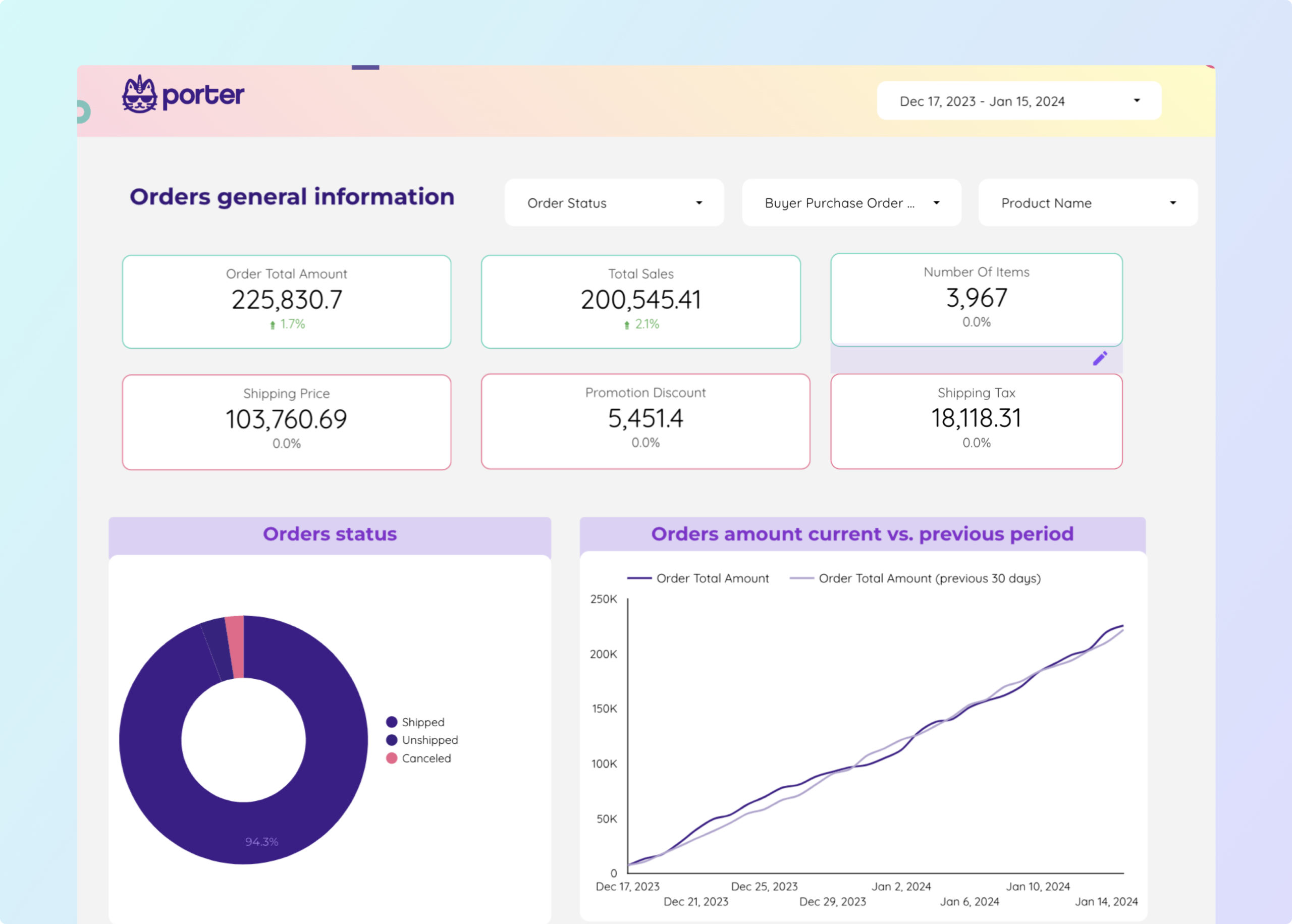
Amazon Seller Central Dashboard template
The Amazon Seller Central Dashboard template provides a structured overview of your e-commerce operations on Amazon. This template is designed to streamline your access to critical data and insights, allowing you to manage your seller account effectively.
With this dashboard, you can monitor:
- Sales Performance: Track your sales metrics, including total sales, units sold, and average selling price.
- Inventory Levels: Keep an eye on stock availability and receive alerts for low inventory to prevent stockouts.
- Order Management: View and manage your orders, including pending, shipped, and returned items.
- Customer Feedback: Access customer reviews and ratings to understand buyer satisfaction and areas for improvement.
- Advertising Metrics: Analyze your advertising campaigns’ performance, including impressions, clicks, and conversion rates.
This template is an essential tool for sellers aiming to maintain a competitive edge in the Amazon marketplace by providing a clear and organized view of their business operations.
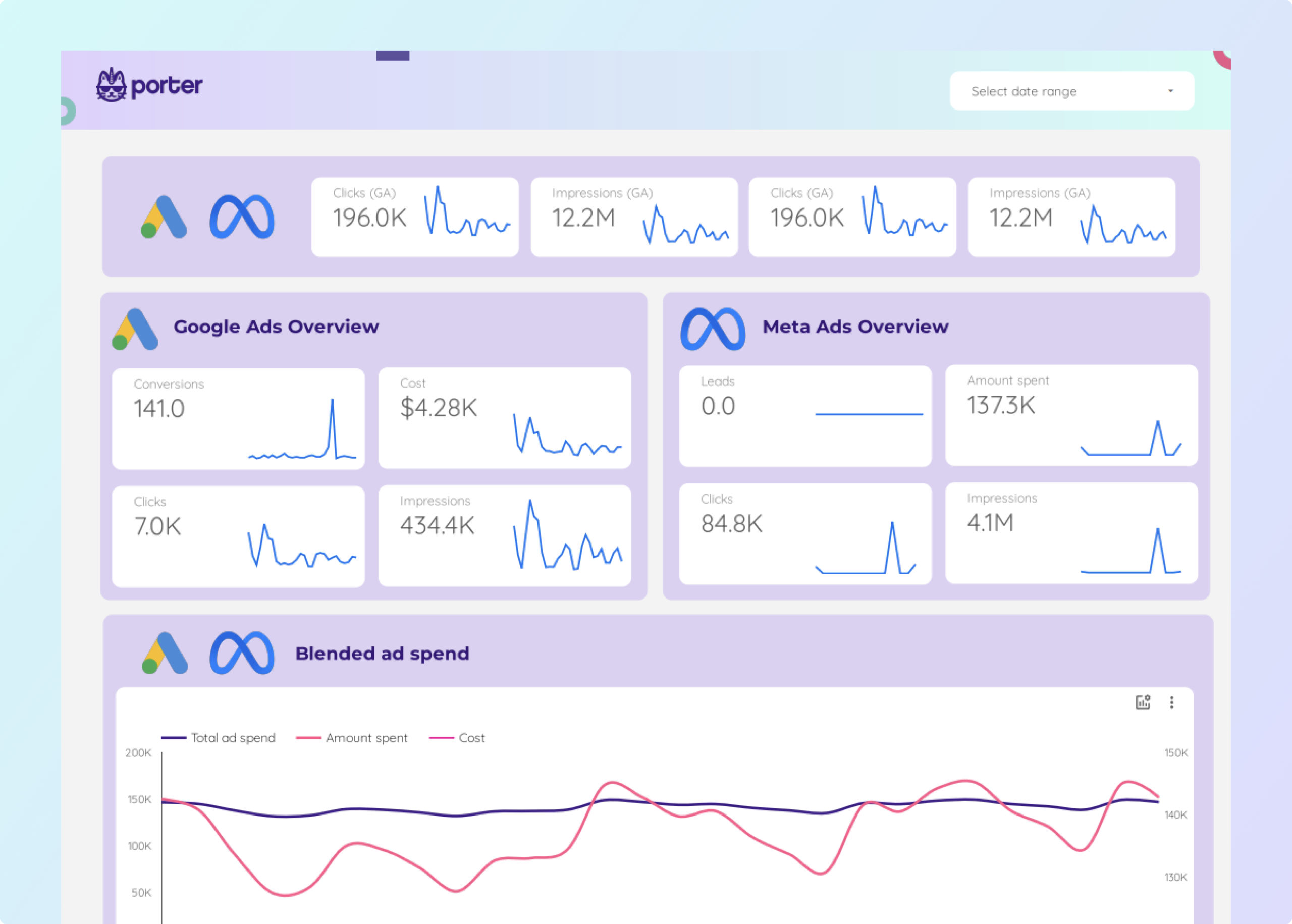
Facebook Ads + Google Ads Dashboard template
Introducing the Facebook Ads + Google Ads Dashboard Template, a powerful tool for managing and analyzing your PPC campaigns. This template is designed to streamline your advertising efforts across two major platforms: Facebook Ads and Google Ads.
With this dashboard, you can:
- Track and compare performance metrics from both Facebook and Google Ads in one place.
- Monitor ad spend, click-through rates, and conversion rates to optimize your campaigns.
- Analyze audience engagement and reach to better understand your target market.
This template provides a centralized view of your advertising data, allowing for informed decision-making and strategic planning. Utilize this dashboard to gain insights into your PPC strategies and drive better results for your business.
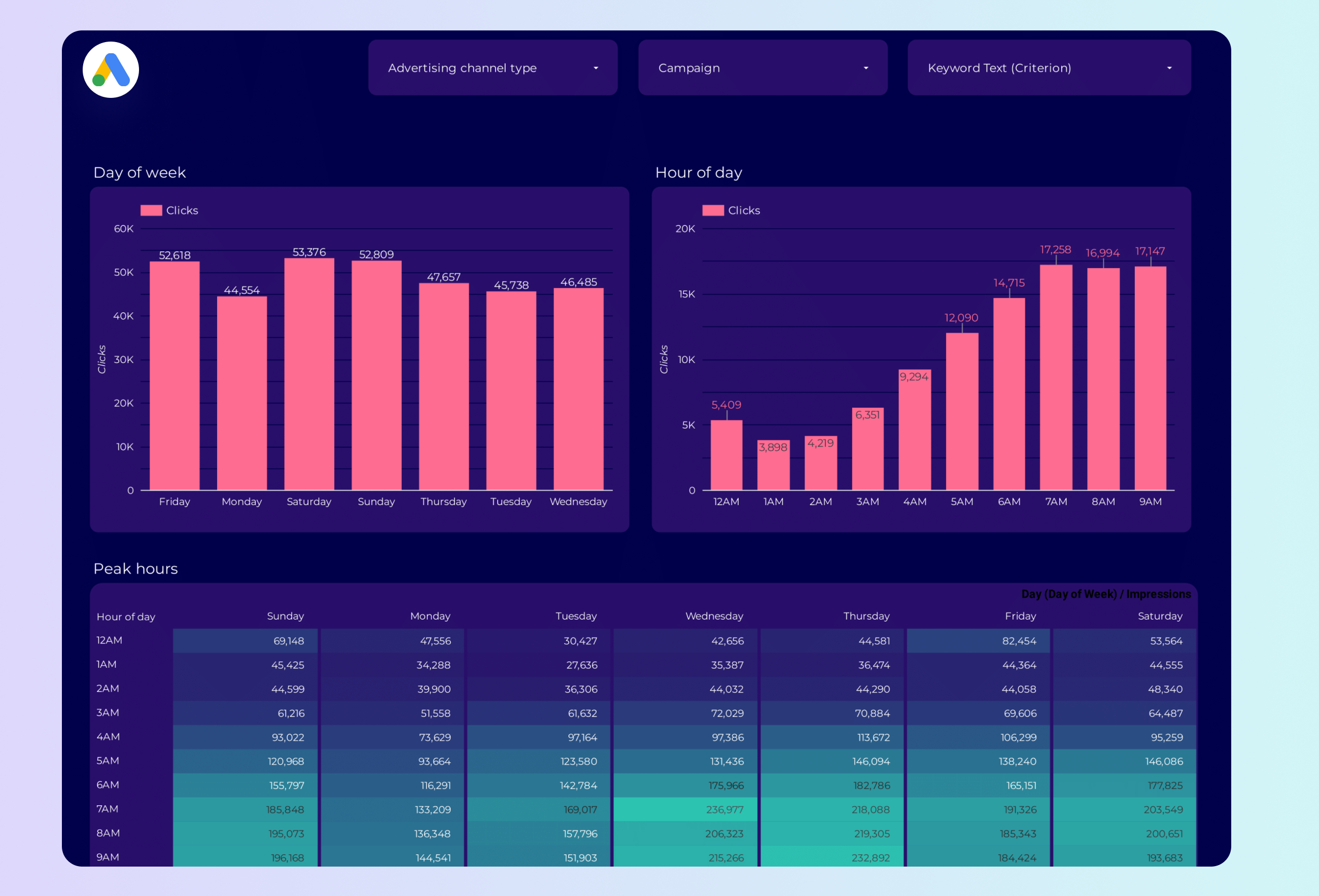
Google Ads Peak hours Dashboard template
The Google Ads Peak Hours Dashboard template is designed for PPC professionals seeking to optimize their advertising strategies. This dashboard provides a detailed analysis of your Google Ads performance during peak hours, allowing for data-driven decision-making.
With this template, you can:
- Identify peak performance times by analyzing hourly data trends.
- Monitor ad spend and adjust budgets based on high-traffic periods.
- Track conversion rates to understand customer behavior during different times of the day.
Utilize this dashboard to align your PPC campaigns with the most effective time slots, ensuring maximum ROI from your Google Ads investments.
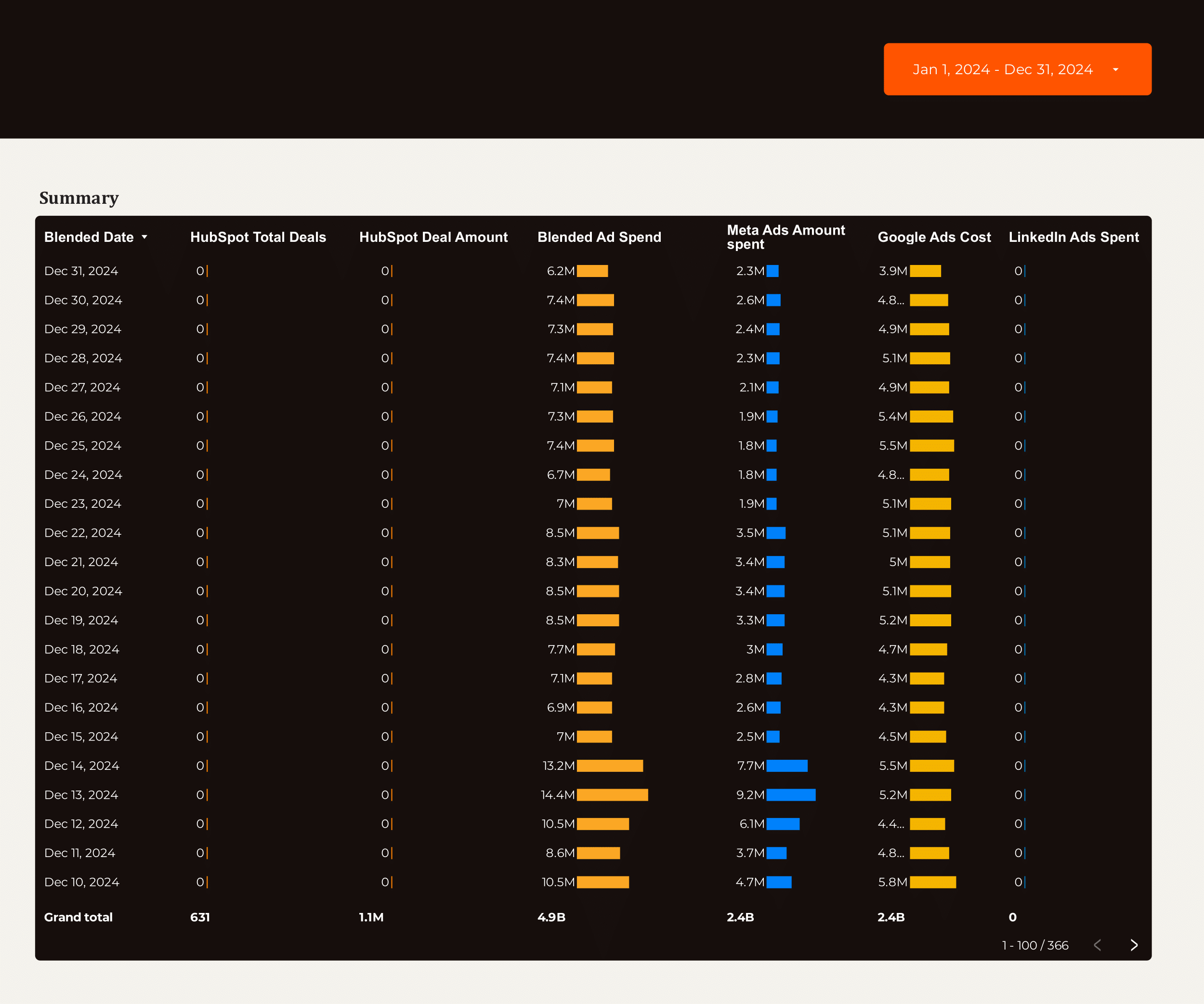
Lead generation Dashboard template
The Lead Generation Dashboard Template is designed for B2B marketers and sales teams to streamline their lead management process. This template integrates with popular platforms such as Google Ads, LinkedIn Ads, Facebook Ads, and HubSpot, providing a centralized view of your lead generation efforts.
Utilize data from Google Analytics 4 to track and analyze the performance of your campaigns. The dashboard offers insights into:
- Lead Sources: Identify which channels are driving the most leads.
- Conversion Rates: Monitor the effectiveness of your PPC campaigns.
- CRM Integration: Seamlessly connect with HubSpot to manage and nurture leads.
This template is essential for businesses looking to optimize their B2B lead generation strategy by leveraging data from multiple advertising and analytics platforms.
PPC KPIs Dashboard template
The PPC KPIs Dashboard template provides a centralized view of your advertising performance across multiple platforms, including Facebook Ads, Google Ads, LinkedIn Ads, TikTok Ads, and Twitter Ads.
This dashboard tracks essential metrics to help you monitor and optimize your campaigns effectively. It includes:
- Impressions: Total number of times your ads are displayed.
- Clicks: Number of times users click on your ads.
- Click-Through Rate (CTR): Percentage of impressions that result in clicks.
- Cost Per Click (CPC): Average cost incurred for each click.
- Conversion Rate: Percentage of clicks that result in a desired action.
- Cost Per Conversion: Average cost for each conversion achieved.
- Return on Ad Spend (ROAS): Revenue generated for every dollar spent on advertising.
Utilize this dashboard to gain insights into your PPC campaigns’ performance and make data-driven decisions to optimize your advertising strategy.
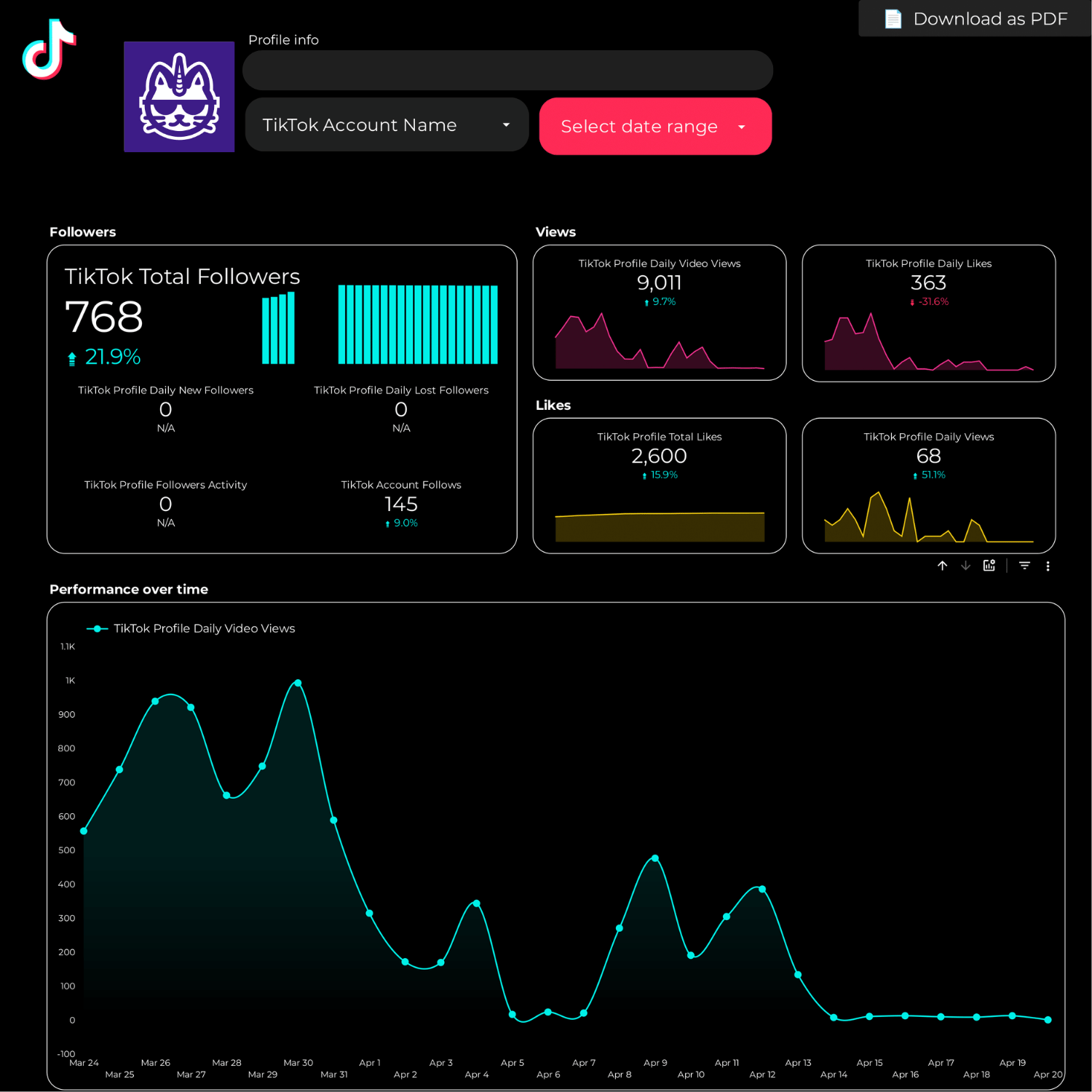
TikTok Dashboard template
Introducing the TikTok Dashboard Template, a powerful tool designed for social media managers and content creators. This template provides a structured approach to monitor and analyze your TikTok performance.
With this dashboard, you can:
- Track Follower Growth: Monitor changes in your follower count over time.
- Analyze Engagement Rates: Evaluate likes, comments, and shares to understand audience interaction.
- Content Performance: Identify top-performing videos and trends.
- Audience Insights: Gain insights into your audience demographics and preferences.
Utilize this template to streamline your TikTok strategy and make informed decisions based on data-driven insights.
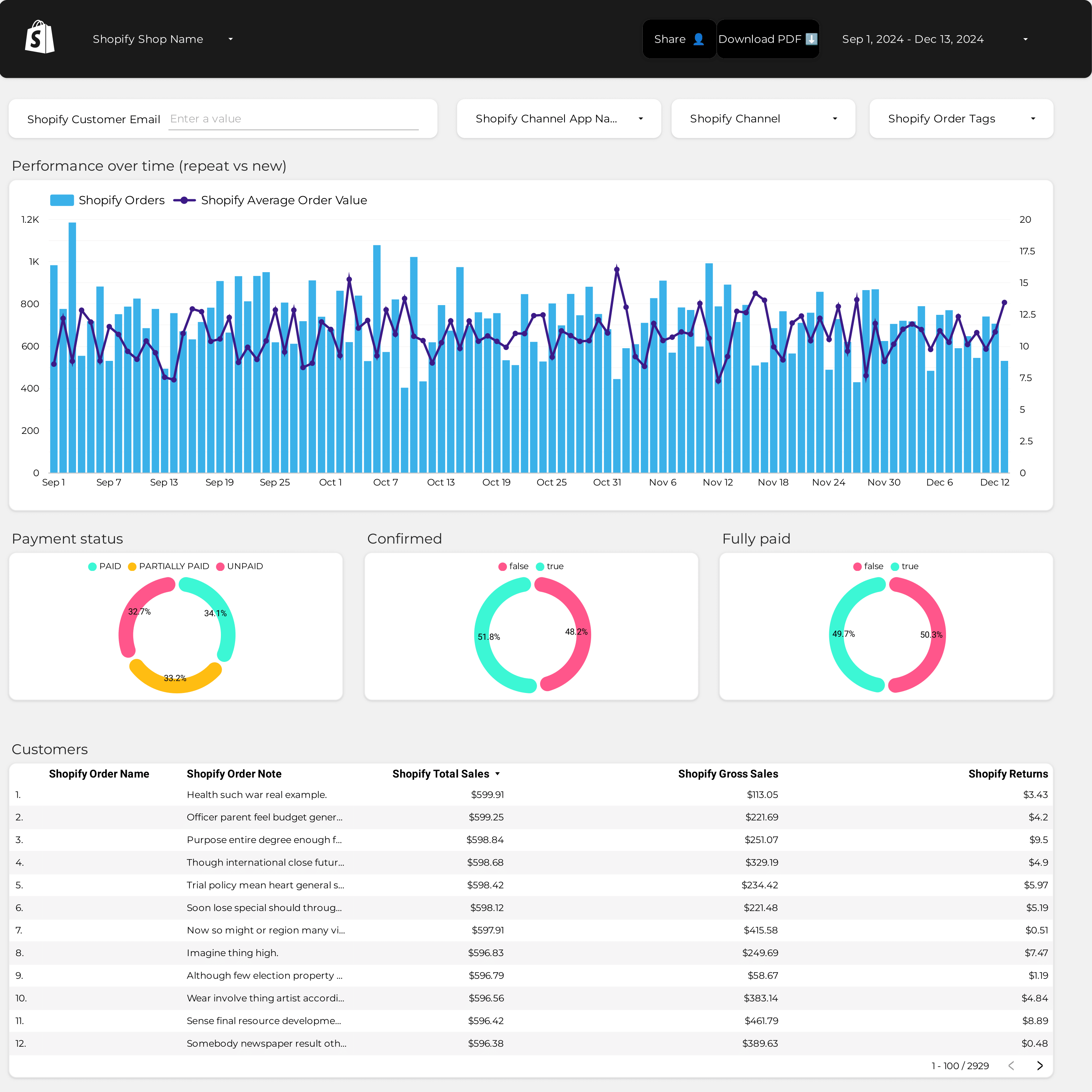
AOV Dashboard template
The AOV Dashboard Template is designed for e-commerce businesses using Shopify. This template provides a structured view of your Average Order Value (AOV) metrics, enabling data-driven decision-making.
Features include:
- Real-time Data Integration: Seamlessly connect with your Shopify store to access up-to-date AOV statistics.
- Customizable Widgets: Tailor the dashboard to display the most relevant AOV data for your business needs.
- Visual Analytics: Utilize charts and graphs to interpret AOV trends and patterns effectively.
This template is essential for monitoring and analyzing your store’s performance, providing insights into customer purchasing behavior and sales strategies.
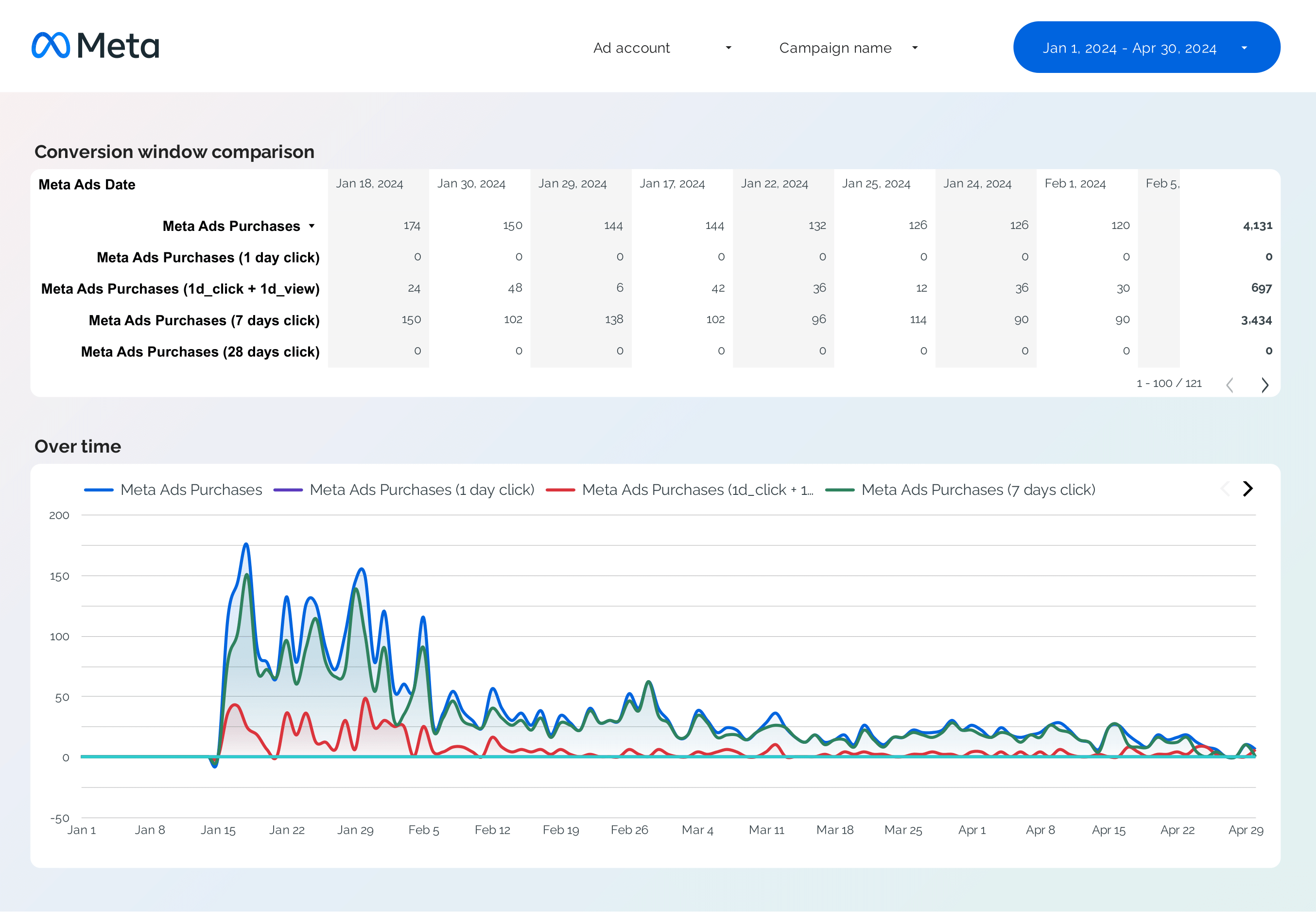
Facebook Ads Attribution Dashboard template
The Facebook Ads Attribution Dashboard template provides a structured view of your PPC campaigns performance. This tool is designed to help marketers understand the attribution of conversions across different touchpoints within Facebook Ads.
With this dashboard, you can:
- Track the performance metrics of your Facebook Ads campaigns.
- Analyze the conversion paths to identify which ads contribute to conversions.
- View multi-touch attribution data to understand the customer journey.
Utilize this template to gain insights into your advertising strategy and make informed decisions based on data-driven analysis.
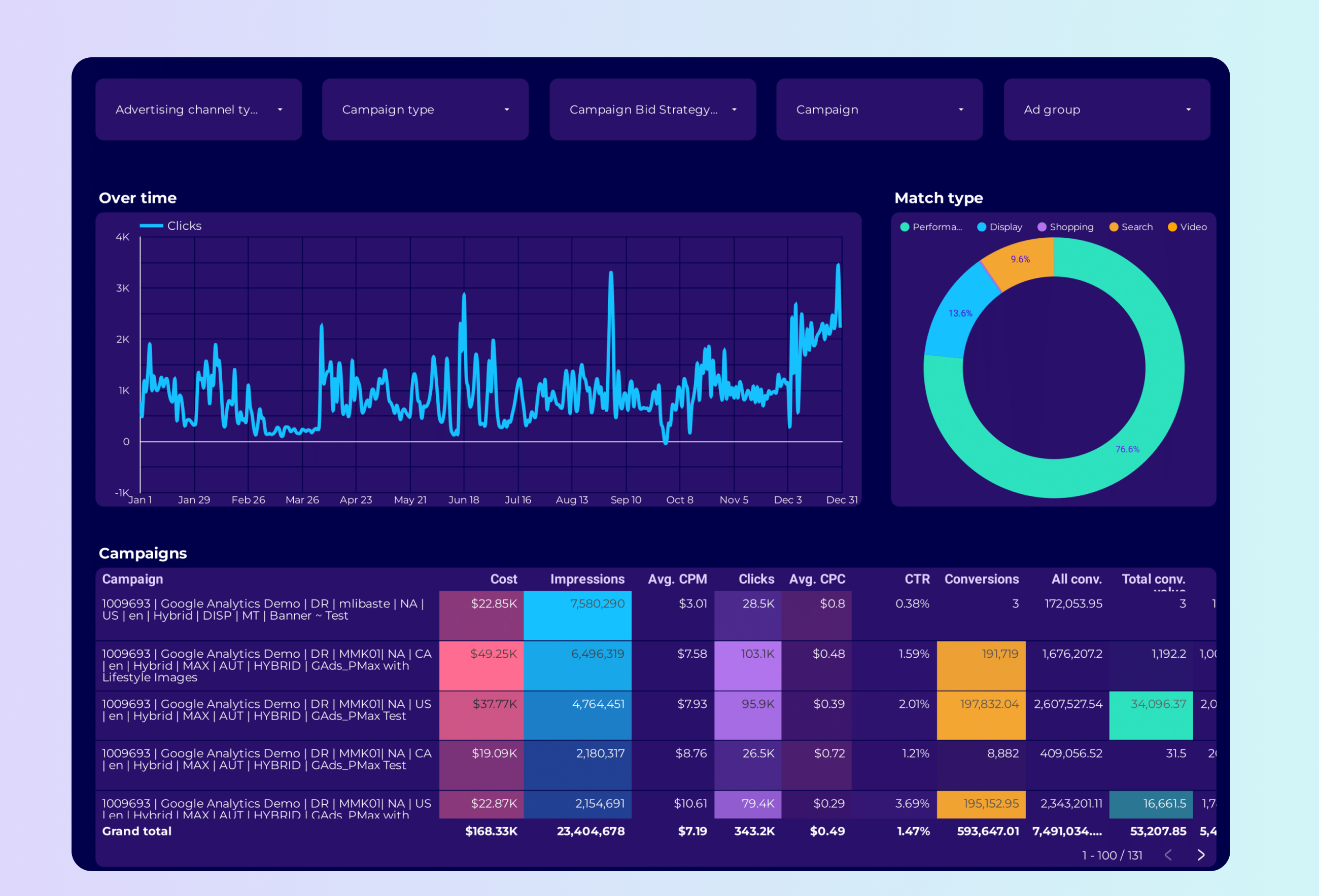
Google Ads PMax Dashboard template
The Google Ads PMax Dashboard template is designed for PPC professionals managing Google Ads campaigns. This template provides a structured view of your Performance Max campaigns, allowing for detailed analysis and reporting.
Features include:
- Campaign Performance Metrics: View metrics such as impressions, clicks, and conversions.
- Budget Tracking: Monitor daily and monthly spend to ensure alignment with campaign goals.
- Audience Insights: Analyze audience segments and their impact on campaign performance.
- Asset Performance: Evaluate the effectiveness of different creative assets within your campaigns.
This dashboard is essential for PPC managers looking to optimize their Google Ads strategies and achieve better results with Performance Max campaigns.
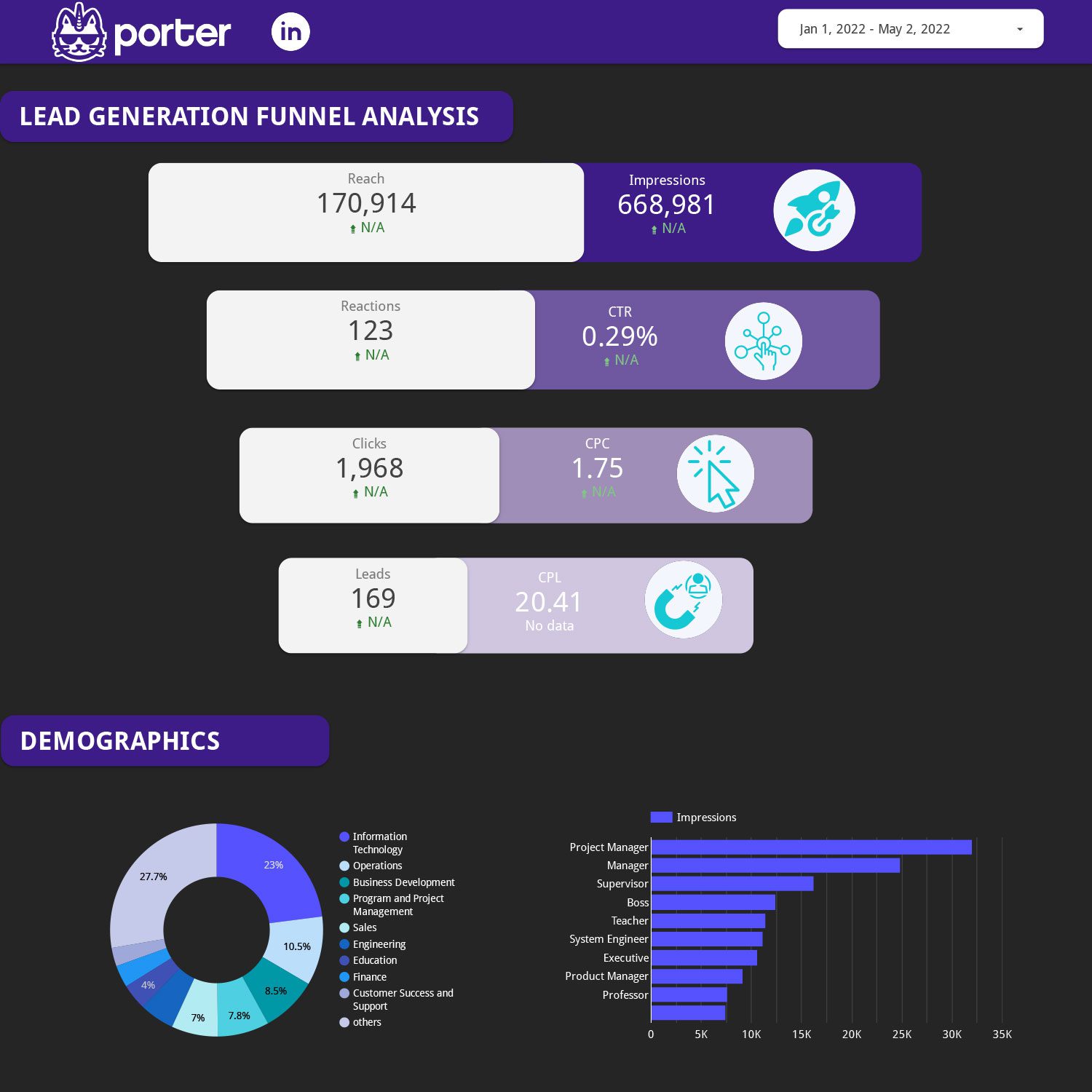
LinkedIn Ads Dashboard template
The LinkedIn Ads Dashboard Template is designed for professionals focused on PPC and Lead Generation in the B2B sector. This template provides a structured view of your Paid Media campaigns on LinkedIn, offering insights into performance metrics and audience engagement.
Key features include:
- Campaign Performance Metrics: Track impressions, clicks, and conversions to understand the effectiveness of your LinkedIn Ads.
- Audience Insights: Analyze demographic data to refine targeting strategies and improve lead quality.
- Budget Management: Monitor spend and ROI to optimize your advertising budget.
- Conversion Tracking: Measure lead generation success and identify high-performing campaigns.
This dashboard is essential for marketers aiming to maximize their LinkedIn Ads impact and drive business growth through targeted PPC strategies.
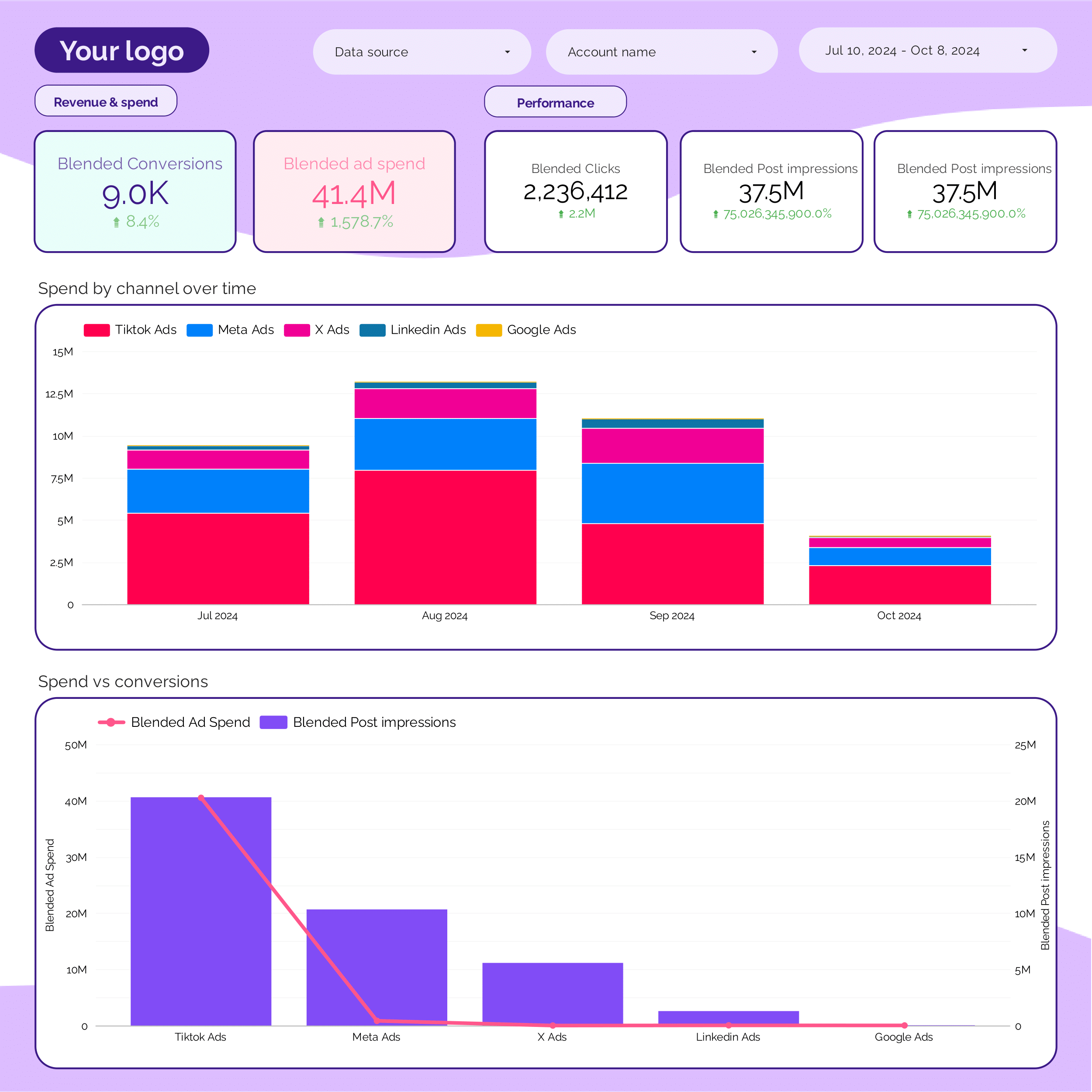
PPC monthly Dashboard template
The PPC Monthly Dashboard Template provides a structured overview of your advertising performance across multiple platforms. This template is designed to streamline the analysis of your campaigns on Facebook Ads, Google Ads, LinkedIn Ads, TikTok Ads, and Twitter Ads.
Each section of the dashboard focuses on specific metrics and data points relevant to each platform:
- Facebook Ads: Analyze metrics such as impressions, clicks, and conversion rates.
- Google Ads: Review data on cost-per-click (CPC), click-through rate (CTR), and quality score.
- LinkedIn Ads: Monitor engagement metrics, including sponsored content performance and lead generation.
- TikTok Ads: Evaluate video views, engagement rates, and audience demographics.
- Twitter Ads: Track tweet engagement, follower growth, and ad spend efficiency.
This template is updated monthly to provide a consistent view of your advertising efforts, allowing for data-driven decision-making and strategic planning.
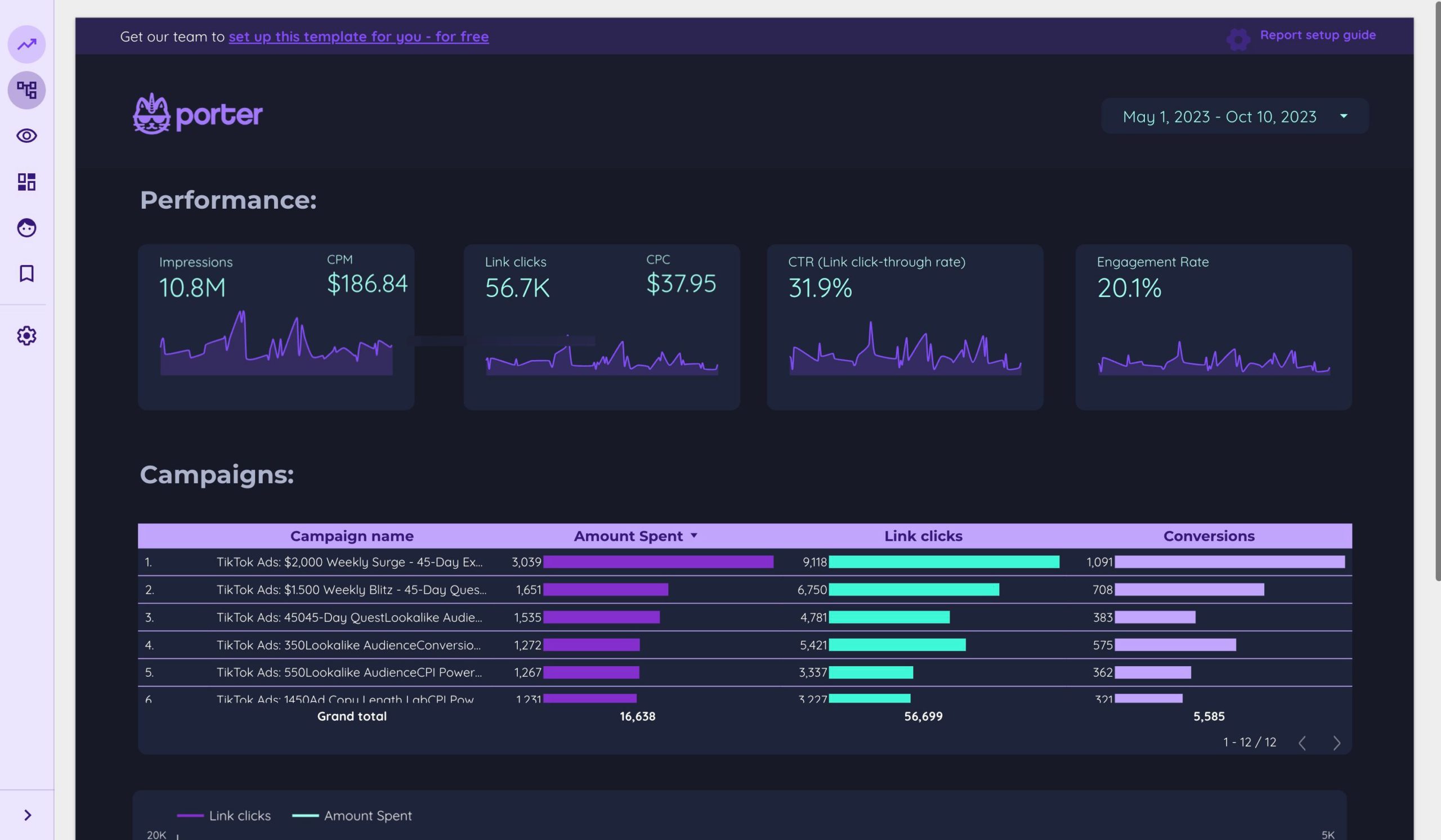
TikTok Ads Dashboard template
The TikTok Ads Dashboard Template is designed for PPC professionals managing TikTok advertising campaigns. This template provides a structured approach to monitor and analyze your ad performance effectively.
With this dashboard, you can:
- Track Ad Spend: Monitor your daily, weekly, and monthly ad expenditures to ensure budget adherence.
- Analyze Performance Metrics: Evaluate crucial metrics such as impressions, clicks, and conversions to assess campaign success.
- Visualize Data Trends: Utilize charts and graphs to identify patterns and make informed decisions.
- Optimize Campaigns: Use data insights to adjust targeting, creatives, and bidding strategies for improved results.
This template is an essential tool for PPC managers aiming to maximize their TikTok advertising efforts.
